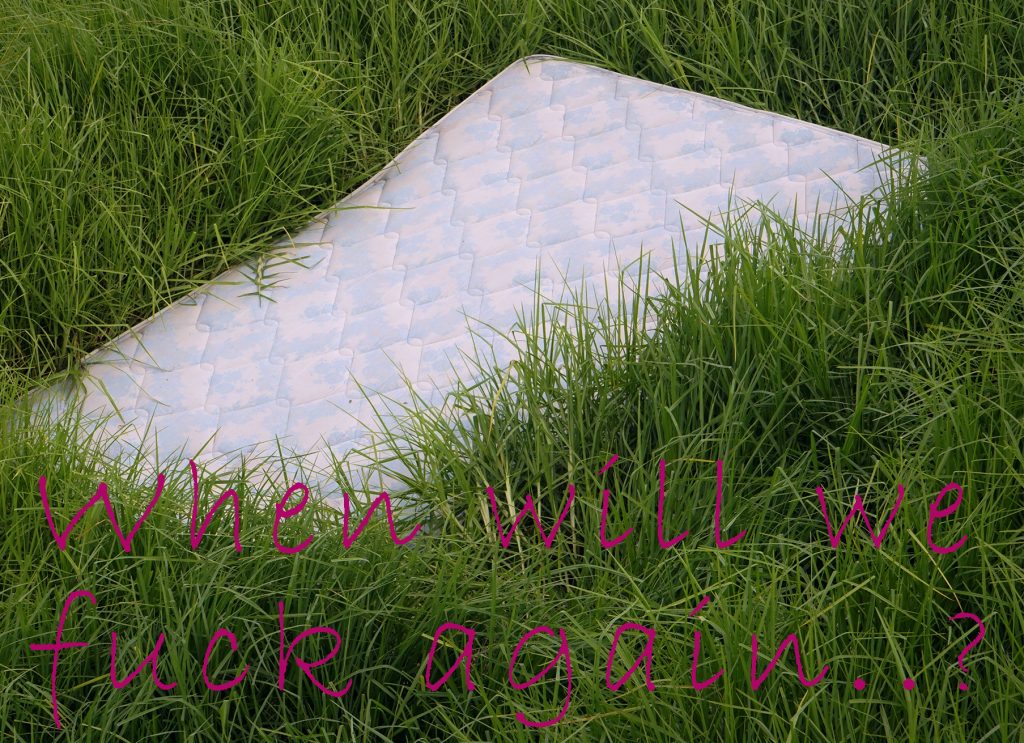
Back to the Future of Public Space: Postcards From 2020
Dorotea Ottaviani and Cecilia De Marinis
2020 has borne witness to an emotionally intense milestone in the life of cities all around the world. The pandemic has imposed restrictions both in terms of accessibility to public space and its uses. Those shifts have deeply affected the physical and emotional engagement that people have with public space. Rhizoma Design and Research Lab started a creative investigation in order to explore how this unprecedented event has influenced and transformed the perception and use of public space.
Firstly, we reflected on how the pandemic has changed the everyday praxis of inhabiting public space and suggested the idea that people’s movements in public space evoke a dance made of a combination of improvisation and staged moves imposed by the new social distancing rules, creating what can be defined as a new ‘urban choreography’. We investigated how bodies perform differently in this new dimension and how they communicate with each other fear, care, and compliance with enforced norms and regulations, as a reaction to the new circumstances.
Curious about how others perceived this situation, we posted on social media an invitation to submit pictures depicting how public space has been affected by the new regulation and restrictions. A selection of those images accompanied our reflections in our chapter titled “New Urban Choreographies. Cohabiting public space in the time of a pandemic” published in the book “Urban Corporis X” (2021).
The numerous pictures we received were telling so many stories and different perspectives that prompted our interest in exploring the hint further and giving a voice to all these narratives. From this insight, we conceived the idea of initiating a collective narrative about how public space and our perception have changed due to the pandemic. For this purpose, we launched a call for postcards called: “Back to the Future of Public Space: Postcards from 2020”.
The title of the call aimed to suggest (besides the pop reference!) reflections on how, in times of crisis, the solution may not only be to wish and hope for a return to what was before, but rather taking the crisis as an opportunity to explore different possibilities and imagining alternative futures. The format of the Postcard is a provocation per se, as it encapsulates the idea of travelling – the action forbidden by the pandemic – giving room for a short text to back an image or a drawing. The selection of postcards was a pivotal step into an observatory of practices, perspectives, memories, and visions that are currently shaping public space.
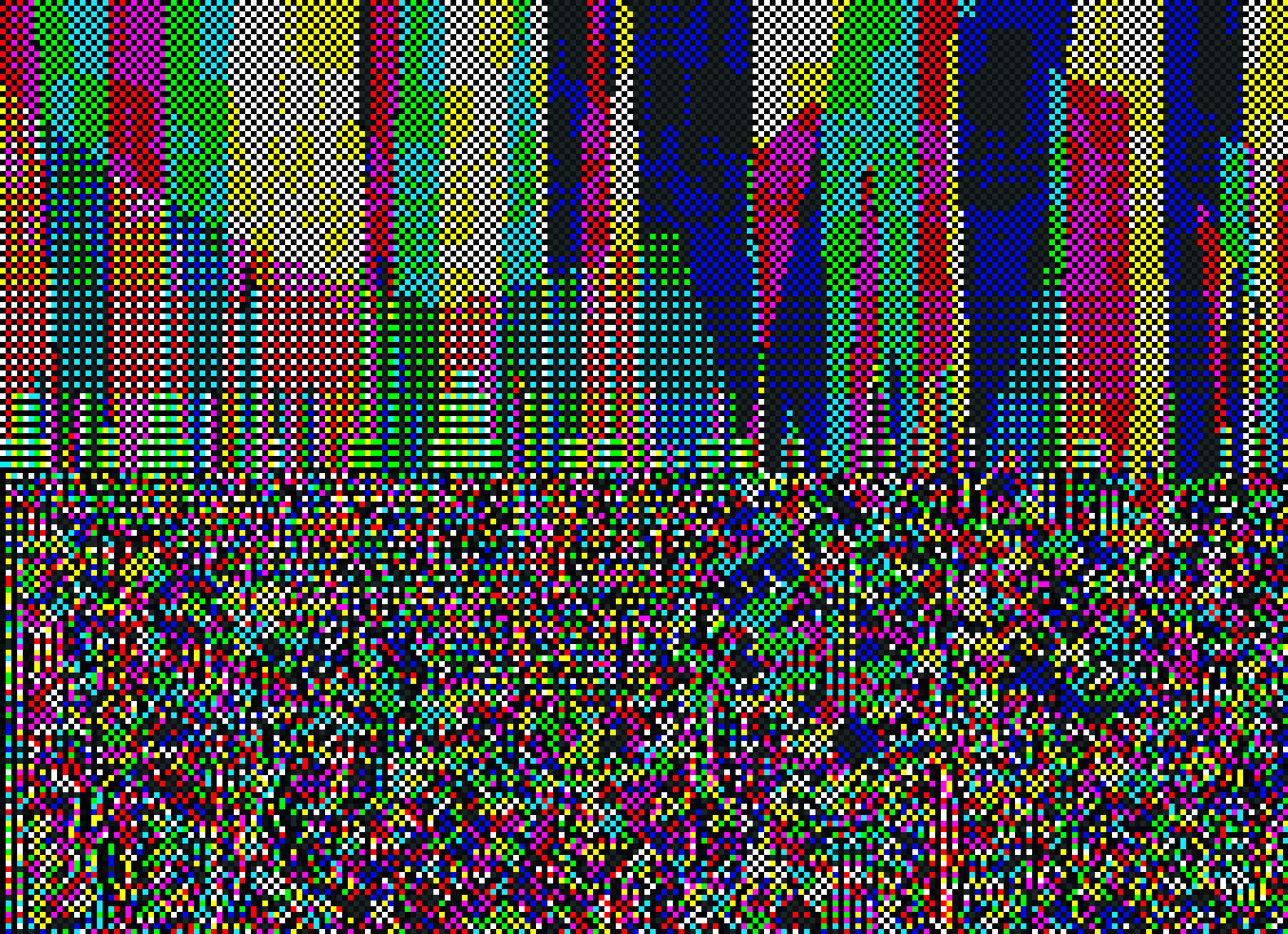
Curvingtheflat or Curvingtheflat_n5E6_cmykrmx+, Gàbor Domjàn, 2021
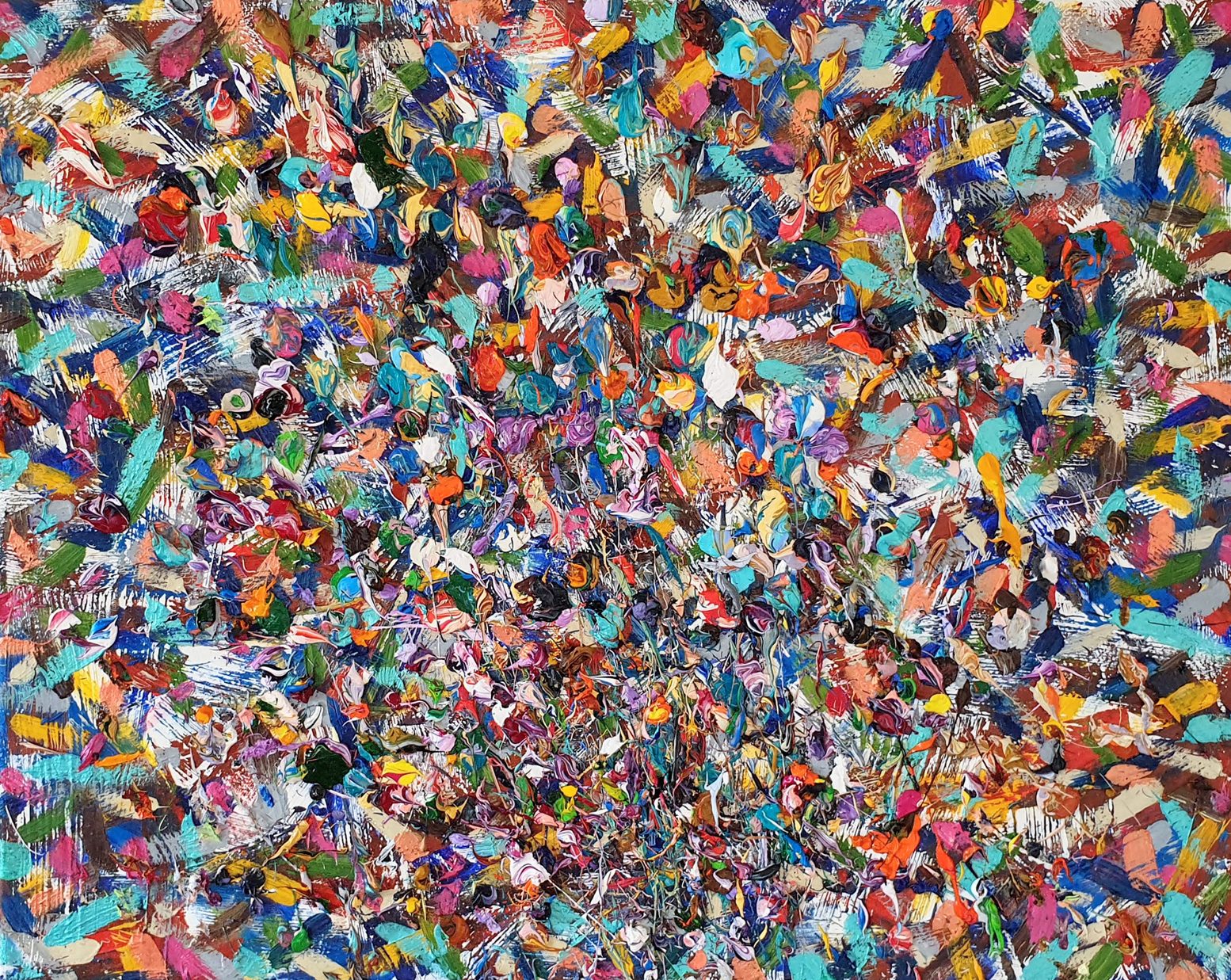
Bournemouth Beach 2020, Madeleina Kay, 2021
Out of the 45 selected postcards a series of themes emerged, the main one being “Emotion”. We realised that, out of very different media of expression and subjects, many participants expressed the complex interrelation of emotions that we all are experiencing in our transformed everyday lives. Some postcards, like the ones by Gàbor Domjàn and Madeleina Kay, explored the idea of crowds with abstract visual intensity, evoking the contrasting sense of fear and joyfulness that being among a multitude of people is now causing. On the other hand, Floor van Ditzhuyzen explores with irony the current conditions of public space. The desolation and distress that those images call forth are translated into surrealist pieces of art.
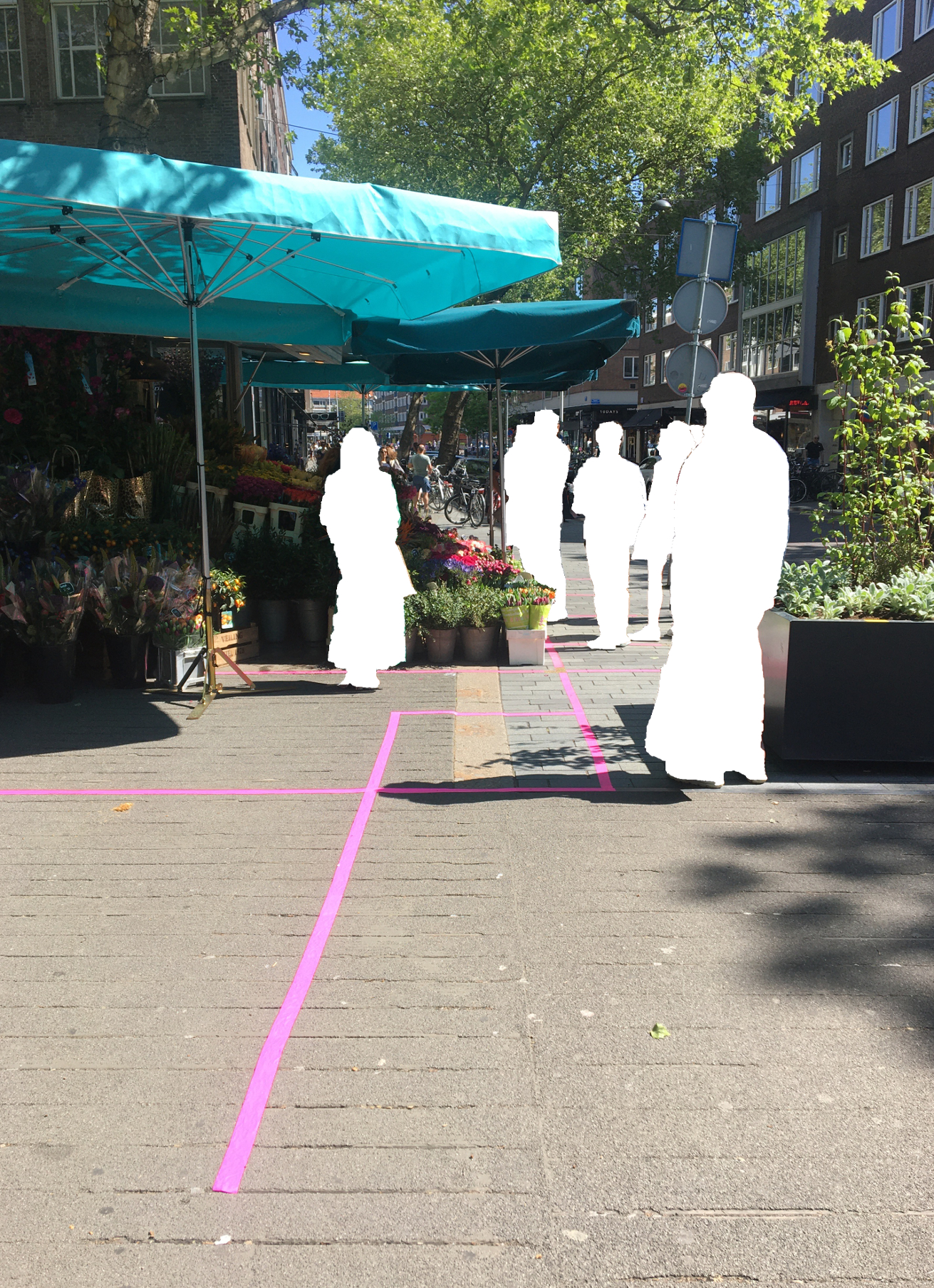
Ghost Town, Floor van Ditzhuyzen, 2021
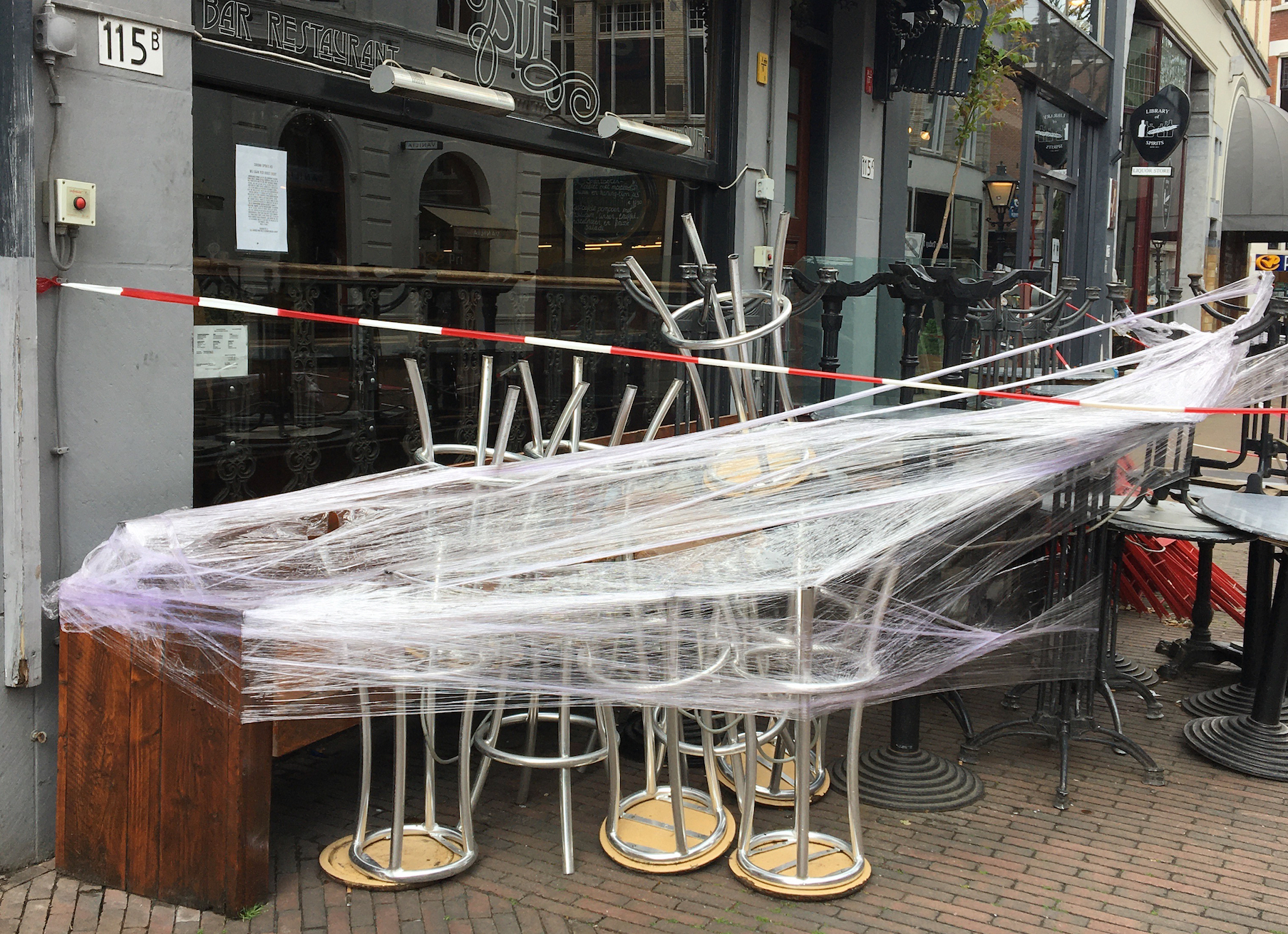
Christo meets Corona or Spider Are Early This Year, Floor van Ditzhuyzen, 2021
This same sense of desolation and emptiness is differently translated in an eerie postcard from Belgrade where the lack of urban life evokes sinister and ghostly scenarios. Restlessness and disquiet, caused by the forced indoor confinement from the lockdown, is explored in opposite ways by two other postcards. Alberta Cuccia’s “Cattività” (Captivity) addresses through contrasts of motion and superimposition of images the uses of shared roofs in a neighbourhood in Rome, where people feel and act as caged animals. Frida Rahne lingers on the grotesque to depict the new daily life restricted within apartments.
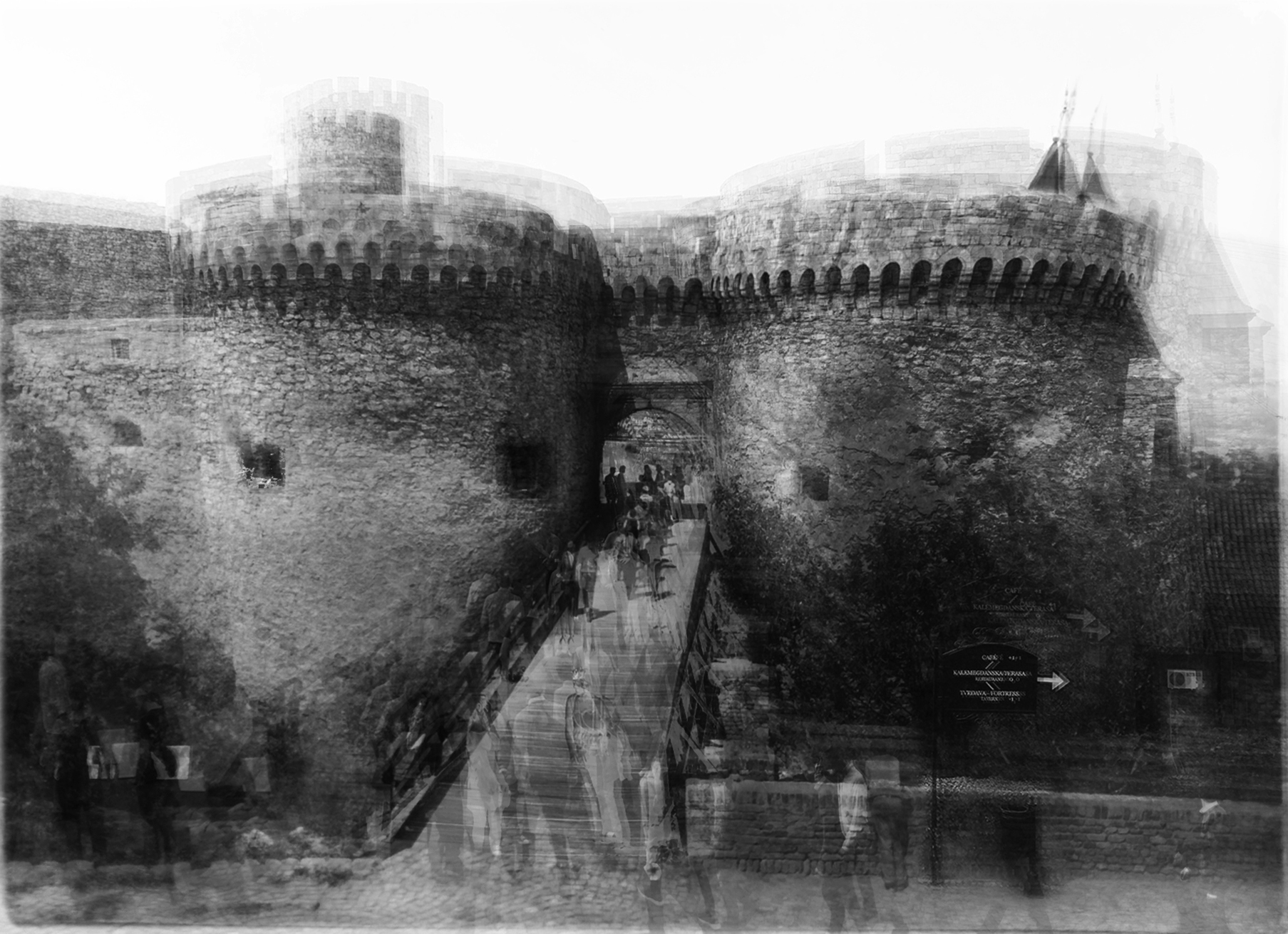
The Postcard as Palimpsest , Dezire Tilinger, 2021
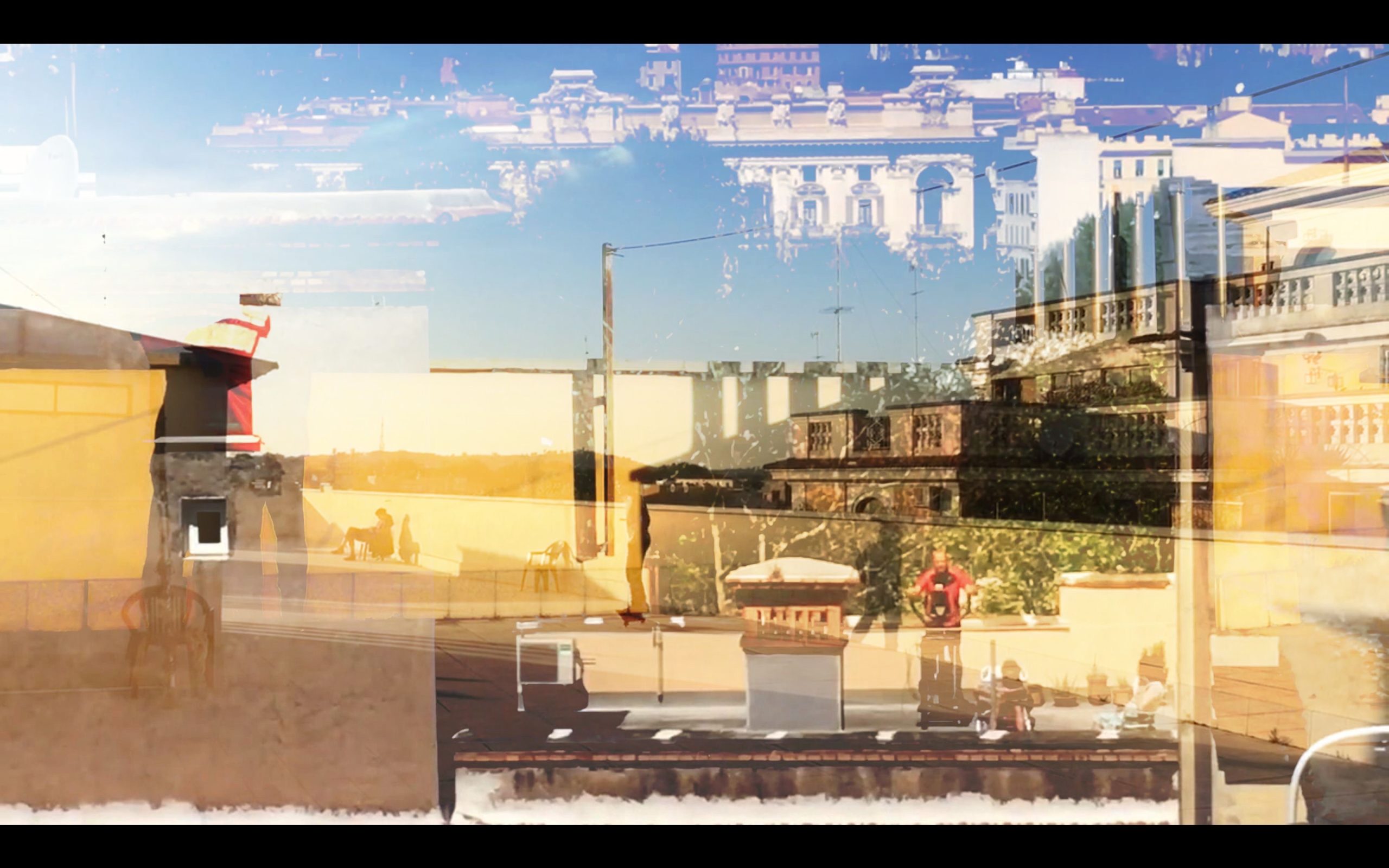
Still image from Cattività, Alberta Cuccia, 2021
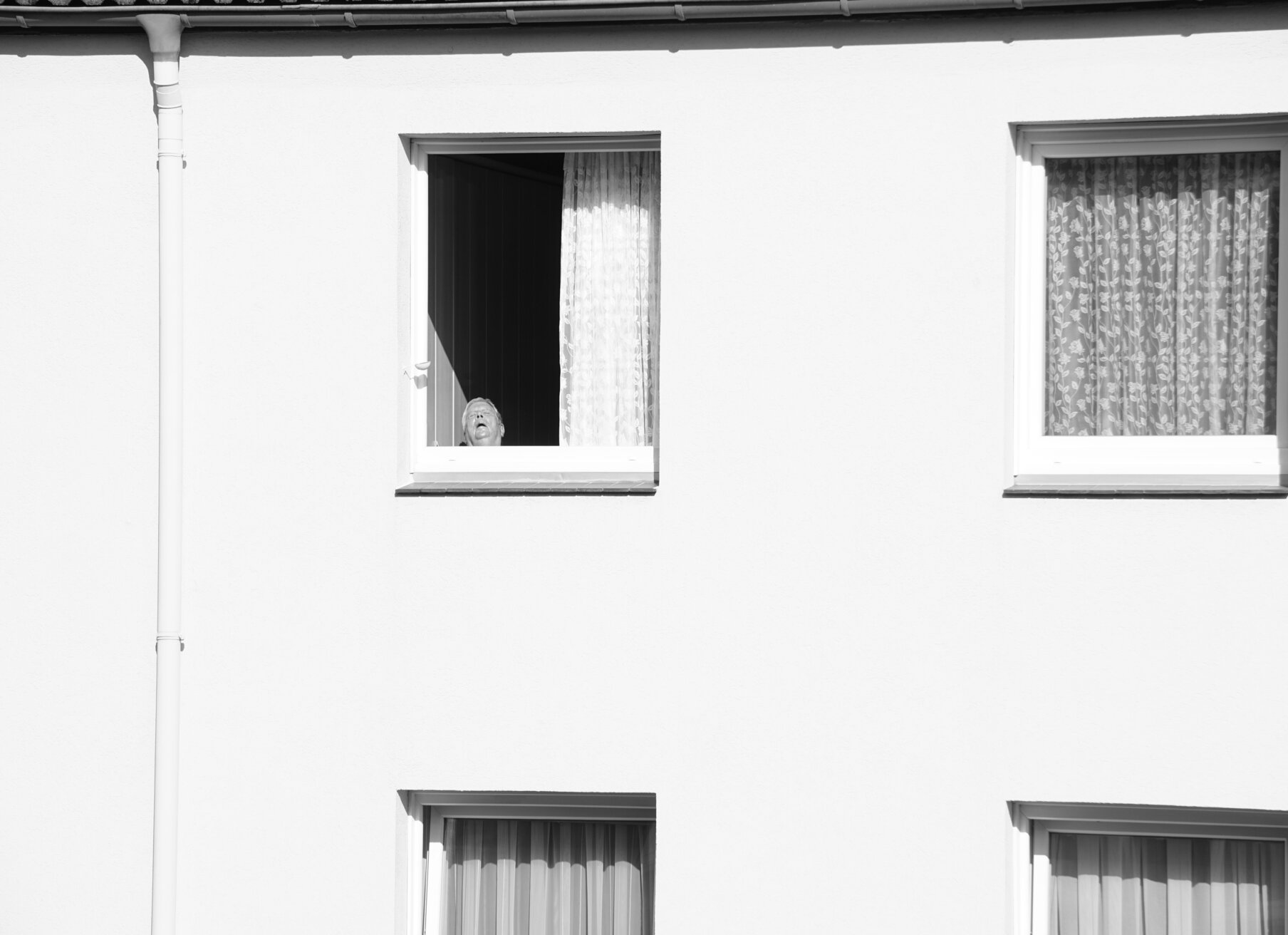
Burnout Society, Frida Rahne, 2021
On a more intimate level, love and closeness are emotions that have been greatly challenged during this period. The postcard by Yimin Qiao delves into the feeling of loneliness that derived from social distancing envisioning a poetic tool to get people closer. “Helium Balloon” is described as “a tool for remote kissing” and magically evokes all at once longing, isolation, care, happiness, and compassion. More prosaically, Ross T. Smith points out to the elephant in the room when he asks on a distress mattress left on a grass field “When will we fuck again…?”. The idea of desire and the contrasting emotions triggered by social isolation are brilliantly depicted in the postcard by Carol and Paul Emmons where the two sides of the coin, public vs private, infection vs isolation, companionship vs quarantine, are condensed in an image that brings us back to an old-fashioned lonely hearts column.

Helium Balloon, Yimin Qiao, 2021
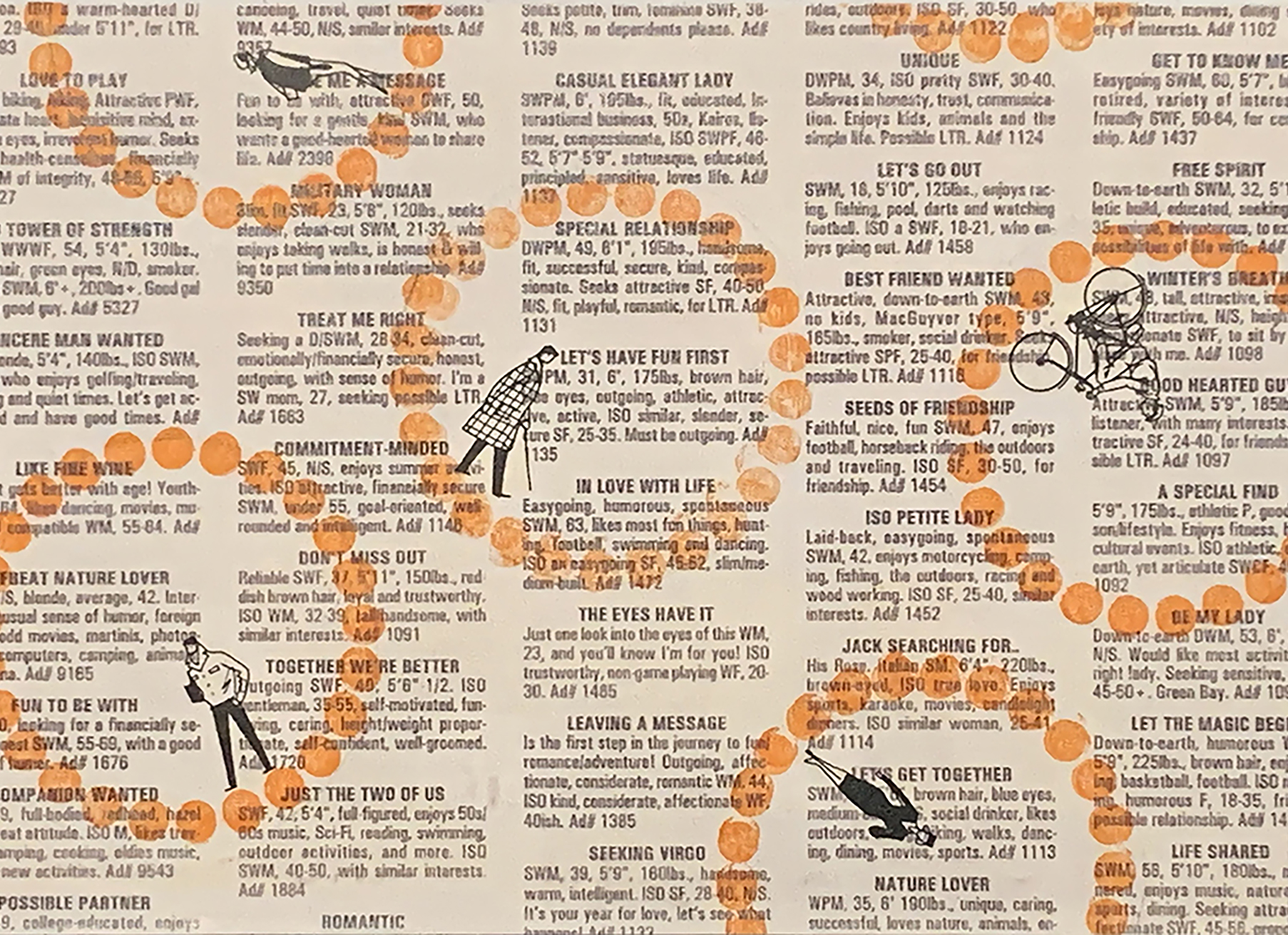
Surveying Desire XVI: Remote Affections, Carol Emmons and Paul Emmons, 2021
The collection of postcards shows a multitude of diverse perspectives, visions, and impressions. However, from this collective narrative emerges, a common pattern of emotions made of doubt, melancholy for the past, fear and wonder for the future, and the anxiety that comes from uncertainty. This narrative tells us how the pandemic is deeply affecting our spirits and has become the source of our pain and hope, strongly dominating our emotional life. Public space is the litmus paper of our new inner reality: it ignites those complex and contrasting emotions while being the place for their mise-en-scène.
Dorotea Ottaviani is an architect, researcher, and educator, currently serving as postdoctoral researcher at the University of Bologna (IT) working on the themes of Cultural Heritage and sustainable development. In the past six years, Dr Ottaviani has been collaborating in a range of special projects central to the implementation of innovative experiential and practice-based pedagogies: as an Experience Researcher for the European Union-funded project ADAPT-r ITN at the Glasgow School of Art (UK), she explored the role of tacit knowledge in the design research; as a Senior Project Associate she contributed to the coordination and management of the Practice-based PhD program at Virginia Tech (USA); and she is currently helping develop a similar PhD program at the Graduate School of Architecture at the University of Johannesburg (SA). Her interests have always been nurtured through both academic research and professional practice and span from urban renewal and adaptive reuse to design research./p>
Cecilia De Marinis is an architect, researcher, and educator, currently working as a Lecturer in Architecture at the School of Architecture and Built Environment, Deakin University, Australia. She graduated as an architect in Italy (2009) and completed her PhD studies in Sustainable Urban Design at the University of Roma Tre, Italy (2014), where she also taught and worked as a researcher. Prior to her position at Deakin, she was a Postdoctoral Research Fellow at RMIT University, Australia and RMIT Europe, Spain (2015-2018) doing research in the field of design research and pedagogy. Her research interests are in urban public space dynamics and the interplay between people and space as well as in design research and pedagogy.
Volume 5, no. 2 Jun-Dec 2022
